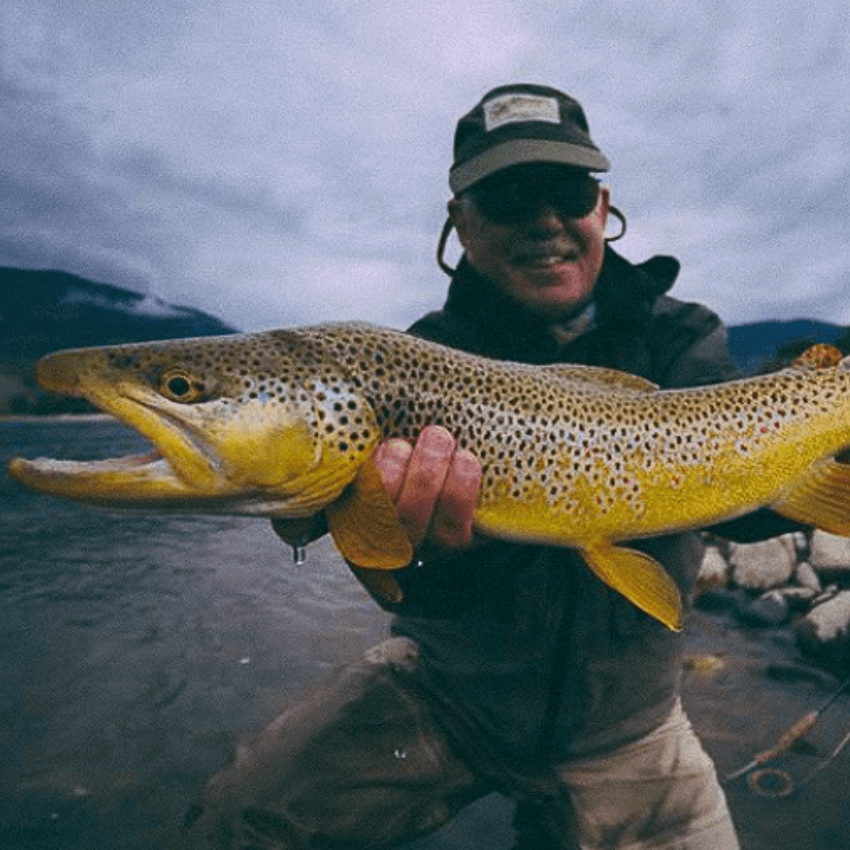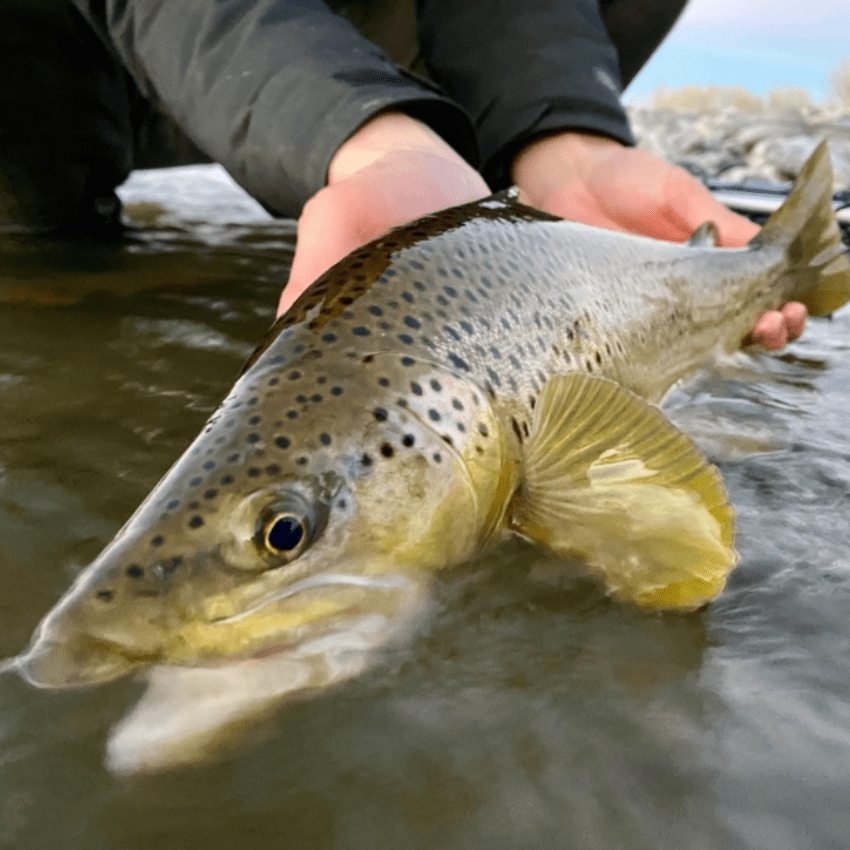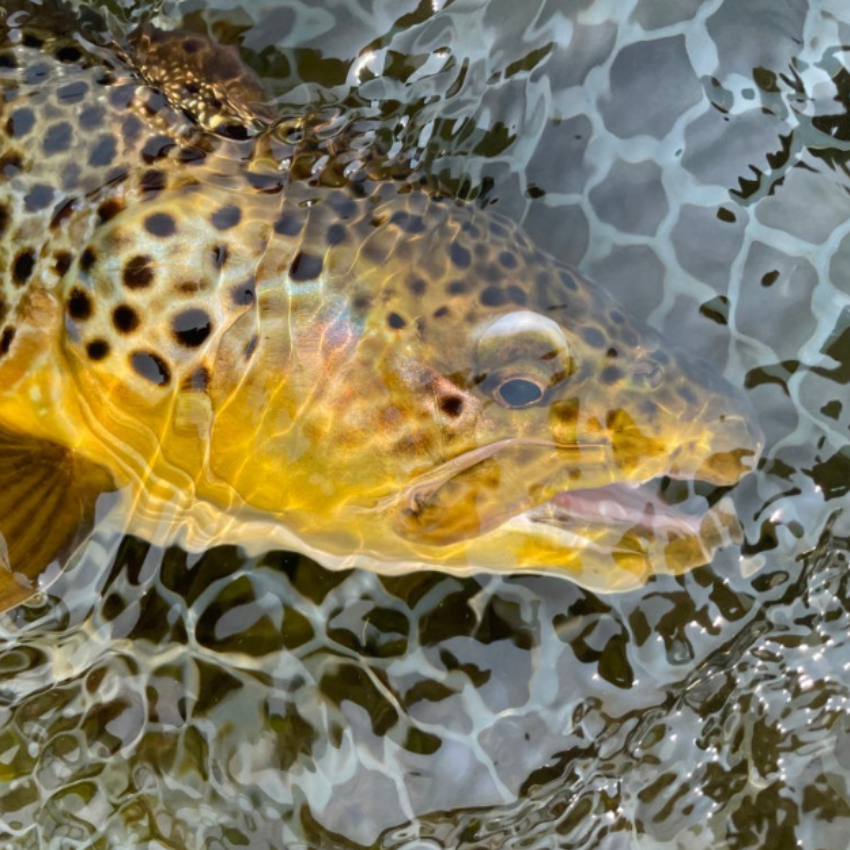
Brown trout (Salmo trutta) is not native to Montana. Originally, brown trout were native to Europe and western Asia, particularly regions such as England, Scotland, Germany, and the Balkans. However, they were introduced to Montana in the late 1800s and have since established thriving populations in many rivers and lakes across the state.
Brown trout in Montana typically spawn during the fall season, usually between October and December. During this time, the males develop vibrant colors and a hooked jaw known as a kype, which adds to their impressive appearance. The female brown trout carefully selects a suitable location, often a gravel bed in a river or stream, to create a redd (a depression in the riverbed) where she will lay her eggs. The male trout fertilizes the eggs, and the female covers them with gravel to protect them from predators.
Brown trout in Montana can vary in size depending on food availability and habitat conditions. On average, adult brown trout range from 10 to 20 inches long, with some reaching heights of over 30 inches. These larger specimens are often called “trophy trout” and are highly sought after by anglers.
Brown trout in Montana can be found in various aquatic habitats, including rivers, streams, lakes, and reservoirs. They are known for their adaptability and ability to thrive in diverse environments. Regarding rivers and streams, brown trout prefer areas with ample covers, such as deep pools, undercut banks, and submerged logs. These structures protect from predators and offer ideal feeding opportunities. Brown trout are commonly found near rocky shorelines, drop-offs, and areas with abundant aquatic vegetation in lakes and reservoirs.
When practicing catch and release techniques as a responsible angler, it is beneficial to keep these conservation tips in mind:


When pursuing brown trout, it’s vital to exercise stealth and finesse. These fish are known for their wariness and sensitivity to disturbances. Here are some tips to enhance your stealthy approach:
Fly fishing for brown trout in the picturesque waters of Montana offers a captivating and rewarding experience for anglers. You can increase your chances of hooking these elusive fish with the right equipment, techniques, and finesse. Remember to immerse yourself in the beauty of the surroundings and embrace the thrill of the chase. As you embark on your fly fishing adventure, always prioritize conservation and ethical practices to ensure the sustainability of this beloved sport for generations to come. So, pack your gear, explore Montana’s great rivers, and embark on an unforgettable journey in pursuit of the magnificent brown trout!